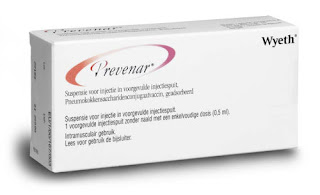More recently, Consumer Reports published an article that concentrates on aspects of antibiotic stewardship. While we all agree that physicians and patients should not misuse or abuse this precious resource, Consumer Reports spends almost no time on the issue of animal antibiotic use nor does it discuss measures to improve the antibiotic pipeline.
To be fair, there is another installment yet to come – hopefully these deficiencies will be addressed there.
To be fair, there is another installment yet to come – hopefully these deficiencies will be addressed there.

In the meantime, I have been giving serious thought as to how to implement the O’Neill incentives in some realistic manner. One area I have been concentrating on is related to the educational component I mentioned in my previous blog.
Here, while respecting de-linkage of marketing from profit, someone must provide education to physicians and caregivers about the new product such that they understand how to use it appropriately.
One example I will never forget is related to Wyeth’s Prevnar vaccine to protect infants and children from pneumonia, bacteremia and meningitis caused by Streptococcus pneumoniae.
When the marketing group first polled pediatricians as to the need for such a vaccine, only a very small percentage agreed that such a vaccine would benefit their patients. This was apparently because in any given pediatric practice, the number of cases of such disease each year was very small. Therefore, individual pediatricians could not see the larger picture.
Wyeth partnered with the Centers for Disease Control in the US as well as with pediatric infectious disease physicians to educate clinicians as to the actual impact of the disease within the US population of children. With these data, they could then make an educated guess as to the favorable impact of the vaccine that was at that point still undergoing its late stage trials.
At the time of launch, following the educational campaign, something like 70% of pediatricians understood that such a vaccine would benefit their patients. In point of fact, the vaccine and its later improved versions have had an enormous impact on the disease in the US and around the world and are recommended as a routine vaccination for children universally. Prevnar was also the largest dollar volume launch of a product in the history of the pharmaceutical industry at the time.
I would say that this was a win-win for everyone.
When the marketing group first polled pediatricians as to the need for such a vaccine, only a very small percentage agreed that such a vaccine would benefit their patients. This was apparently because in any given pediatric practice, the number of cases of such disease each year was very small. Therefore, individual pediatricians could not see the larger picture.
Wyeth partnered with the Centers for Disease Control in the US as well as with pediatric infectious disease physicians to educate clinicians as to the actual impact of the disease within the US population of children. With these data, they could then make an educated guess as to the favorable impact of the vaccine that was at that point still undergoing its late stage trials.
At the time of launch, following the educational campaign, something like 70% of pediatricians understood that such a vaccine would benefit their patients. In point of fact, the vaccine and its later improved versions have had an enormous impact on the disease in the US and around the world and are recommended as a routine vaccination for children universally. Prevnar was also the largest dollar volume launch of a product in the history of the pharmaceutical industry at the time.
I would say that this was a win-win for everyone.







Comments